We’ve probably all seen panda bears eating bamboo, at least in pictures or in David Attenborough documentaries. And of course, you were moved by what an adorable animal the panda is. But it’s very unlikely that you started craving a nice, thick stalk of bamboo to chew on. Although it makes up about 95% of the panda’s diet, westerners don’t generally think of bamboo as a mouth-watering treat.
Bamboo shoots, when harvested and prepared correctly, can be very tasty and nutritious. In fact, humans have been cultivating bamboo for food for thousands of years. Unlike pandas who eat the leaves, the woody culms and all, people cannot digest those parts of the bamboo. It’s only the fresh, tender shoots, usually appearing in spring and fall, that we find palatable. And if you’re interested in growing bamboo for food, there are certain species to look for, with the sweetest and best-tasting shoots.
In the following article — first published in October 2020 and most recently updated in April 2024 — we’ll look at the reasons and benefits of eating bamboo. We’ll also list some of the most flavorful species. And finally, we’ll give you some tips on how to prepare bamboo shoots for human consumption.
Why eat bamboo?
Especially in Asia, people have been enjoying bamboo as sustenance for thousands of years. It is readily available and abundant, and in the old days, that was reason enough to eat it. But even today, in the age of mega-markets and global cuisine, consumers still enjoy the refreshing taste and crunchy texture of tender, young bamboo shoots.
At the beginning of every growing season, the well-established bamboo plants will send up a barrage of new shoots. As they grow upward, over the course of the season, they gradually harden and turn into woody canes, better known as culms. But in the first few days or weeks, before the shoots turn to wood, they are roughly as soft as an apple. The texture is very similar to a water chestnut, one of bamboo’s distant relatives. (Water chestnut belongs to the sedge family, while bamboo is considered a true grass.)
Added to a curry dish or a stir fry, the bamboo shoots bring an extra crunch to the meal. But they’re also a great source of protein, minerals and fiber. At the same time, they are low in fat and sugar. With a vigorous growth habit of its own, bamboo does not require any pesticides or fertilizers, unlike most commercial food crops. And new research on the subject suggests that eating bamboo can also improve appetite and digestion, and even treat diseases like cancer.
Furthermore, the leaves, which cannot be eaten, but are excellent for making tea, are a fabulous source of silica. Silica helps build collagen to rejuvenate connective tissues and restore elasticity to skin and joints. So, for example, many people drink bamboo leaf tea to treat the symptoms of arthritis.
The best species when growing bamboo for food
If you want to grow bamboo for food, you’ll find that some species are actually a lot tastier than others. And, of course, the bigger the bamboo the bigger the shoots. So planting a timber bamboo will provide you with a more substantial meal when the growing season comes around.
Tropical and subtropical bamboo shoots
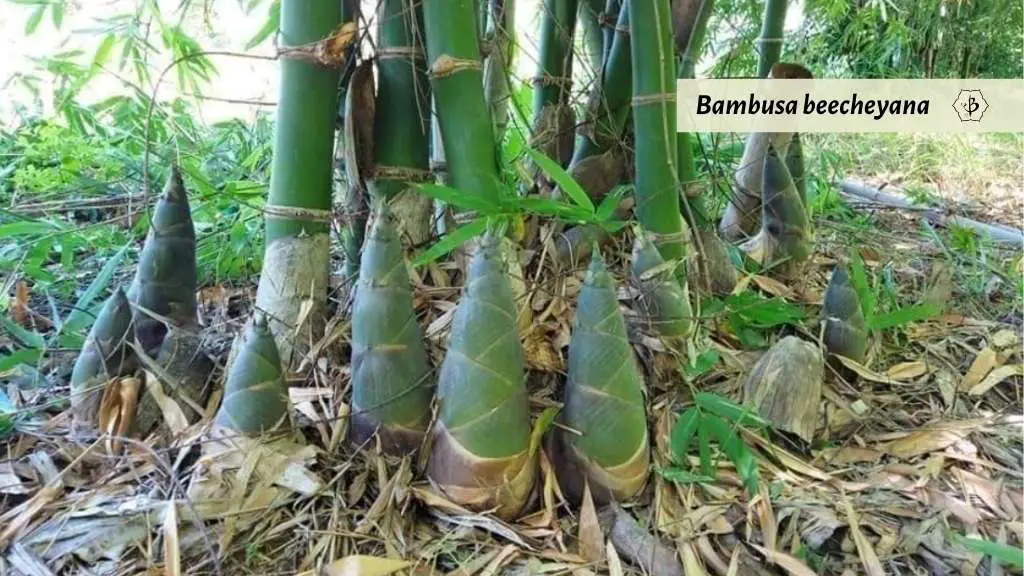
- Bambusa beecheyana: One of the more exotic varieties, this bamboo species is hard to come by in the United States. But in Laos and Vietnam, it is one of the most popular species to cultivate for edible shoots. The dense clumps produce great quantities of exceptionally large shoots which the locals consider especially delicious. In recent years, farmers in Florida have also begun to examine the commercial potential of this Southeast Asian specimen.
- Bambusa malingensis: Often called Seabreeze, this is another clumping bamboo of Chinese, sub-tropical origin. As the name implies, this is a great species for growing in coastal areas like Florida and California. But it also grows well elsewhere, so long as it stays above 20º F. Although it’s clumper, it grows quickly and makes a good privacy screen. Tightly clumping, dark green culms grow about 40 feet tall and about 2-2.5 inches in diameter.
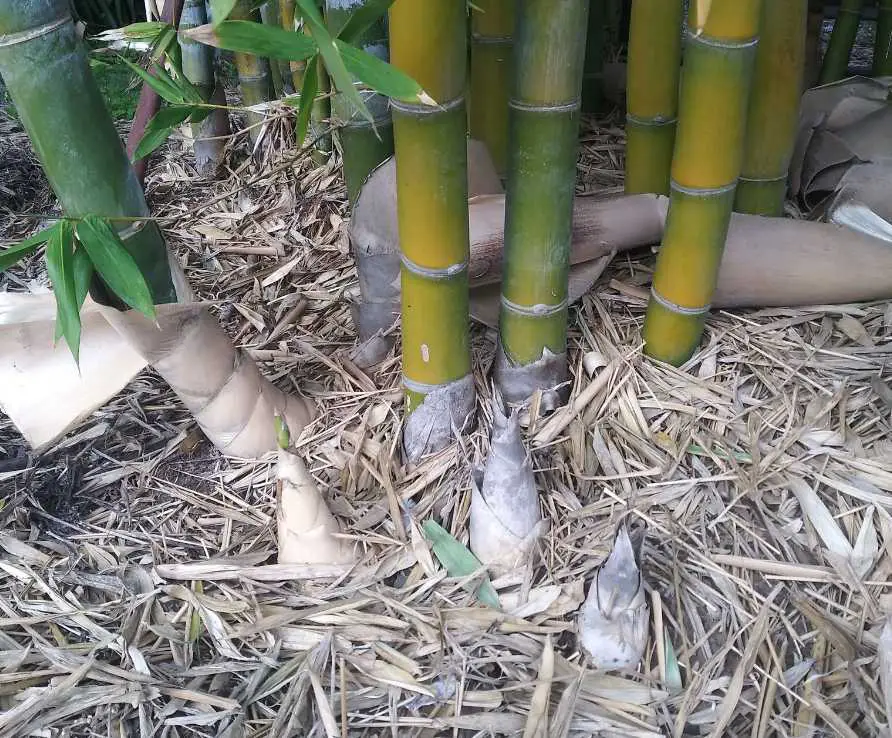
- Bambusa oldhamii: Also called Giant timber bamboo, this is probably the most widely grown species of bamboo in the United States. Although it’s native to more tropical and sub-tropical climates, it also grows very well in mild climates, including most of the West Coast all the way up to Vancouver. Under ideal conditions, this timber bamboo can grow 60 or 70 feet tall with smooth, waxy culms up to 4 inches in diameter. In cooler climates, it won’t get quite is big, but it will still make an impressive addition to the garden. It’s cold hardy down to about 20º F. And it’s nice to know that Oldhamii is a clumping variety of bamboo, so you won’t need to worry about the invasive rhizomes taking over your yard.
- Bambusa textilis ‘gracilis’: Commonly known as Graceful bamboo, this is another one of the most popular species of bamboo, especially for privacy screens. The shoots grow tall, upright and elegant, as the name would suggest, producing a wonderful canopy of foliage. Again, like all members of the genus Bambusa, this is a tropical, clumping species. It prefers warmer climates but can handle winter temperatures down to about 20º F. Under ideal conditions, it can get about 30 tall, with arching poles just over an inch thick.
- Dendrocalamus asper: Sometimes known as Sweet Bamboo or Giant Bamboo, this Southeast Asian species is among the most widespread commercial bamboo varieties. Most farmers grow it for the mighty poles which make a superior building material, but the fresh shoots are also some of the best-testing in the bamboo catalog.
- Dendrocalamus hamiltonii var. edulis: This South Asian bamboo can grow to 50 or 60 feet tall, in tight clumps, with culms up to 5 or 6 inches thick. Zigzag culms are dull, dark green, with a profusion of long branches. Shoots are among the best-tasting of any species.

Temperate bamboo for food
- Chimonobambusa quadrangularis: Better known as square bamboo, due to the 4-sided shape of its culms, this exotic variety can also provide a square meal! This running bamboo comes from Chinese and has a very distinctive appeal, to both the eye and the palate. The plant can grow 10-20 feet high with culms about 1.5 inches thick.
- Phyllostachys aureosulcata: Widely grown as an ornamental, this species, known as Yellow groove bamboo, has a distinctive yellow stripe that runs along the culm grooves. Poles can grow up to 30-40 feet tall and 1.5-2 inches in diameter. The fresh shoots are quite tasty, without the bitter flavor, and can even be eaten raw. Like all members of the genus Phyllostachys, this is a runner, and a particularly vigorous one, so be careful where you plant it.
- Phyllostachys bambusoides: A large timber bamboo from Japan, whose shoots are eaten either fresh or dried. Japanese timber bamboo, or Madake, as it’s sometimes called, can grow more than 50 feet tall in ideal conditions, with culms up to 5 inches thick. It can tolerate temperatures as low as -5º F, but in colder climates it won’t grow as big.
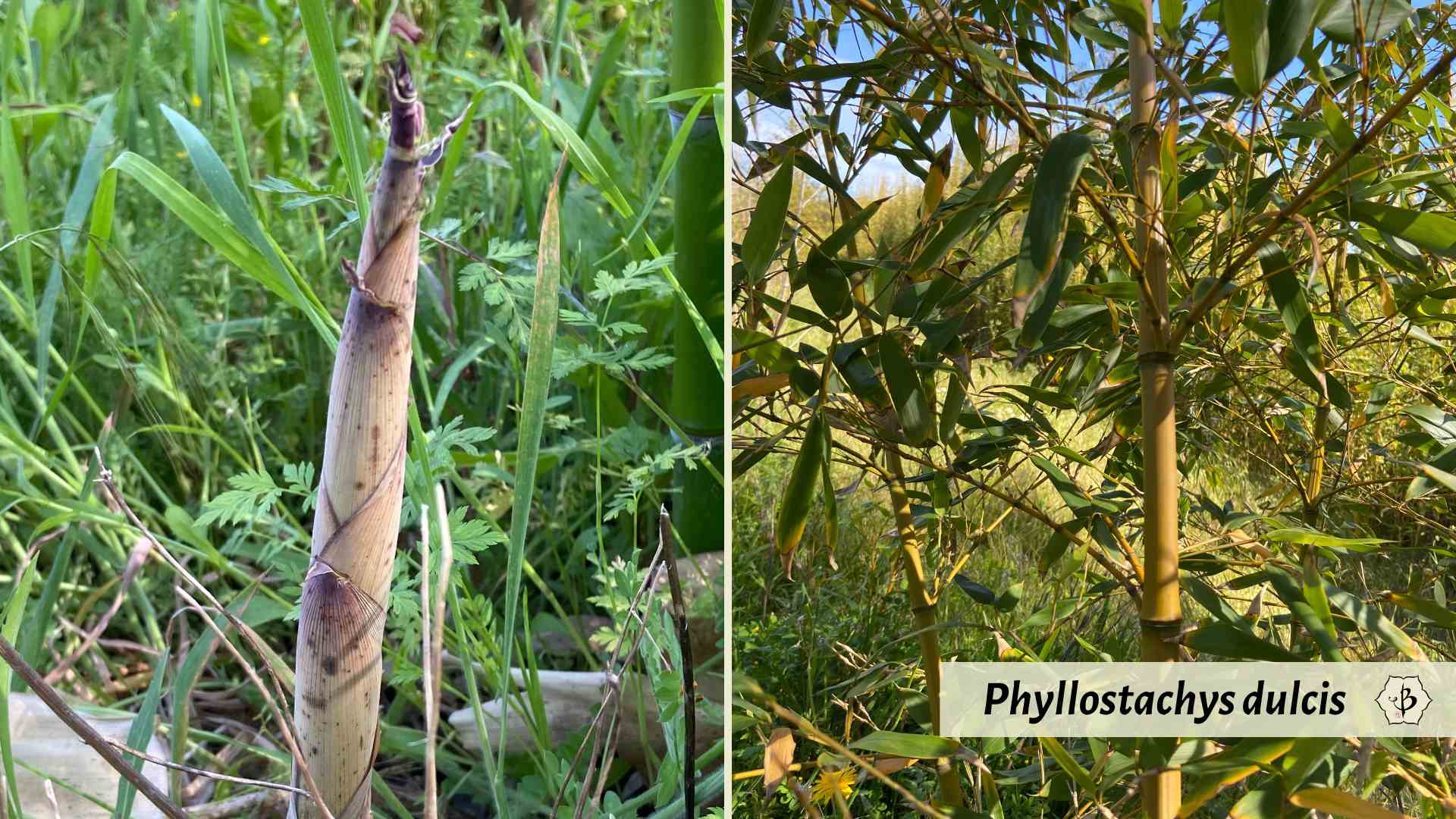
- Phyllostachys dulcis: A medium-sized temperate bamboo, “dulcis” literally means sweet. Fresh shoots have little or no bitterness, but we still recommend boiling them just to be safe. This species is recognizable for its pale culm sheaths with pinkish-purple edges.
- Phyllostachys edulis: Also called Moso Bamboo, this giant timber variety is indigenous to China and Taiwan, and is also the most widely used for bamboo textiles. In their native habitat, mature stalks can grow nearly 100 feet tall and get to be several inches in diameter. Fresh shoots from a well-established grove can weigh more than 5 pounds; that’s quite a meal. Depending what time of year it’s harvested, it may be dried or eaten fresh.
- Phyllostachys nigra ‘Henon’: Giant gray is an unusually interesting cultivar of black bamboo that grows considerably larger than the standard P. nigra species. Shoots emerge dark green and slowly turn a dusty gray color, unusually attractive. Mature poles can get 60 feet tall and 4-5 inches in diameter, producing some generously sized and delicious shoots.
- Phyllostachys nuda: This is an especially cold-hardy and fast-growing species with deep green culms and lush foliage. Canes can grow 30-40 feet tall and 1.5-2 inches in diameter. Cold hardy down to -10º F.
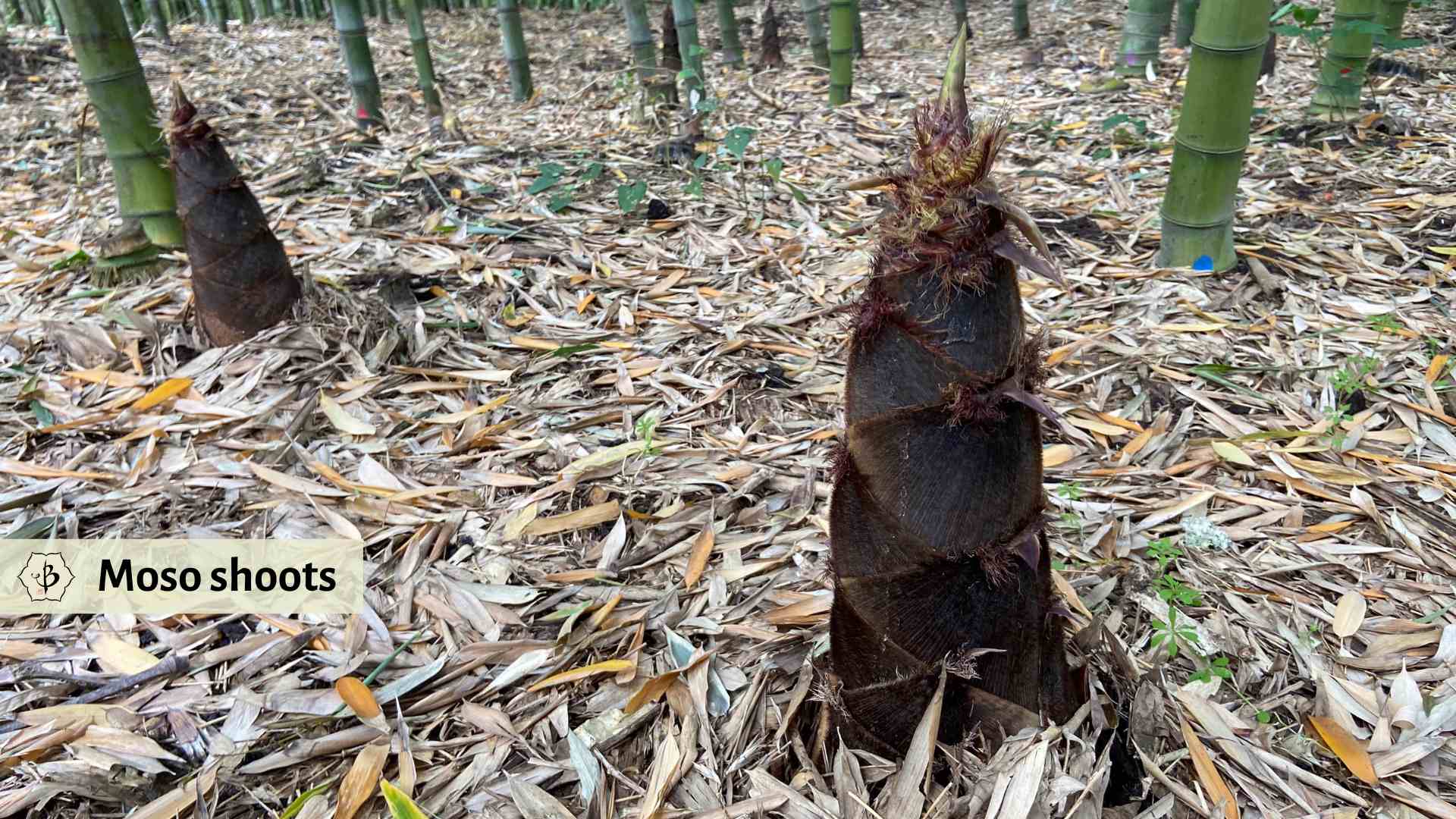
Preparing bamboo before eating
If you want to eat your bamboo, you can’t just pull a shoot out of the soil and bite into it like a carrot. Raw bamboo contains natural toxins (glycocides), and you need to cook it or ferment it before you can eat it. So when we speak of fresh bamboo shoots, we don’t mean raw bamboo, we just mean that it hasn’t been canned or jarred.
The simplest thing to do is to boil your bamboo shoots. Begin by removing the outer couple layers, which you can easily peel off. Then rinse the shoots just to make sure you got all the dirt off. Place the clean shoots in a pot of water and bring it to a boil. Once the water is boiling, you can reduce it to a simmer and let the bamboo cook for about an hour. Poke it with a skewer, and it should run through without difficulty. As it cooks, the bamboo’s texture softens, something like the change from a raw potato to a boiled potato. This process removes the bitterness from the flavor, as well as the natural toxicity, which are in fact related.
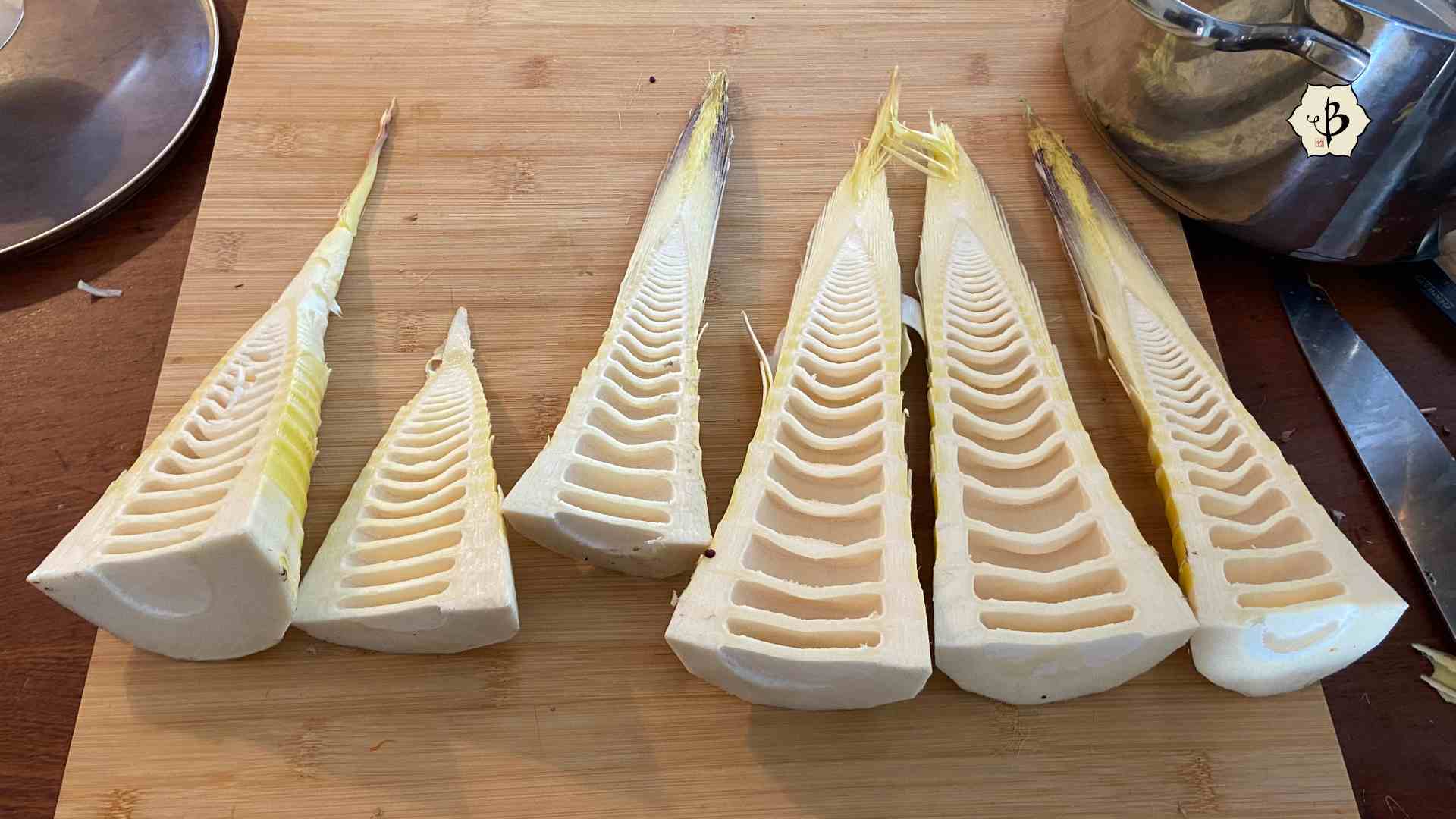
Another easy method is to pickle your bamboo shoots. To pickle them, simply place your clean bamboo shoots into jars and submerge them in a brine, consisting of 1:1 vinegar and purified water. You can use whole or sliced shoots, depending on their size and your preference. Add garlic or herbs for flavor, and store the jars in a fridge for two to three weeks.
Fermentation is probably the most involved process, but it also produces the most nutritious results. Lacto-fermentation adds beneficial bacteria to your bamboo, while also increasing its shelf life. First, peel and clean the shoots thoroughly. Then you can either slice them up lengthwise into thin strips, cut them across into thin rings, or do a combination of the two, as you prefer. Now place the sliced bamboo pieces into clean jars. Pack them tightly, but don’t cram them. Feel free to add things like garlic, dill or chili peppers, if you’d like.
Finally, pour salt water over the bamboo and fill the jars. The ideal ratio is about 1 tablespoon of sea salt per pint. Now close the lids, but not too tightly. Keep it in a cool place out of direct sunlight. Within a week, the bamboo should be ready. It’s a bit like making sauerkraut, and you can also do the exact same thing with carrots.
Bon Appetit!
Further reading
If you enjoyed this article about growing bamboo for food, please consider sharing the blog post or subscribing to our mailing list. You might also be interested in some of the following links:

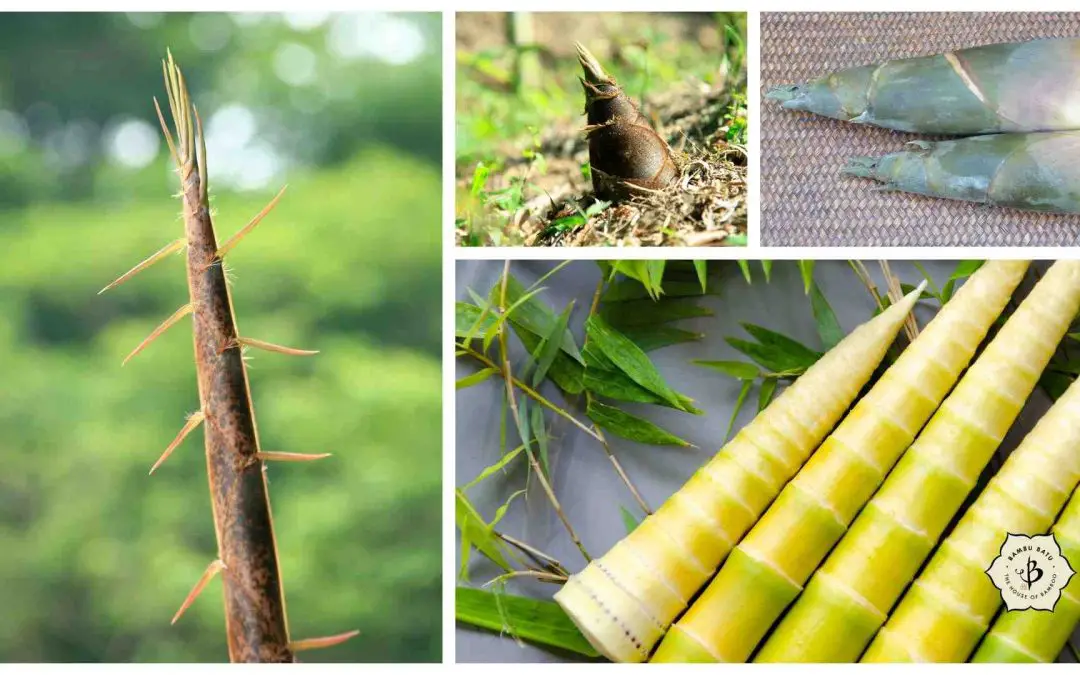
























Hi
My family and I love eating bamboo. We want to grow it to eat but have no idea of how big an area we need).
From the reading I have done it seems by planting a variety of plants we could have young tender shoots for a period of 4-6 months (we are in the North West of France, USDA climate zone 8) so I was thinking of planting say 3 different types of bamboo (possibly 3 different types of phyllostachys) so that we get three distinct periods when we can crop it from spring to early fall with gaps in between so that it remains a treat.
We grow a lot of different things so I imagine that in season, for each type of bamboo, we would eat it on average 3 times per week for however long the sprouts of that type of bamboo could be cropped without overstressing the plant). Please could you tell me very roughly what area I would need for each type of bamboo plant to feed a family of four?
Many thanks
Stewart
You can try planting an assortment of Phyllostachys varieties. If your whole family enjoys eating bamboo as you say, you should plant as much as you can. You shouldn’t start harvesting the shoots until the plants are well established. After about year four you can get about one shoot per square meter.
thanks for the great bamboo content. your blog is always a centre for content for me.
Thank you, Annmary!
Hi Fred…i recently watched a program on NHK about Takenoko where they were hunting for a White Takenoko that was edible right from the ground. Takenoko just means “bamboo-baby” so i’m wondering if you know which species they might be referring to…?
cheers and thank you
curtis
Hi Curtis, I think they are just talking about the age of the bamboo. If you harvest it very young, before it pops up out of the soil, it will have little or no toxicity, so in most cases you would be able to eat it fresh.
Awesome article- thank you! I’ve been preparing and eating bamboo for years. I’m in USDA hardiness zone 7b. I’m looking for a clumping variety that is good for eating, robust, reasonably easy to procure, fast growing, and good as a privacy screen. Any suggestions on what to get and where to buy?
Bambusa oldhmamii might survive there, a beautiful timber variety. Otherwise, the most cold-hardy clumpers are from the Genus Fargesia, much smaller plants.